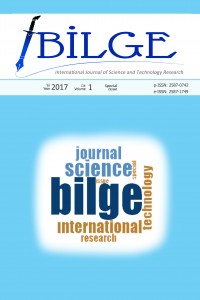Investigation of the Effect of Curing Applications Containing Different Nano Silica on the Strength of Cementitious Composites
Abstract
In
this study, the difference between the increase rate of compressive strengths
of cement-bonded composites at various ages cured in water and solutions
containing different amount of nano-slica has been investigated. In the new
generation curing solution developed, 0.5%, 1%, 2% and 3% of nano silica were
used. A series of samples were cured in water only for control purposes. In the
production of cement-bonded composites, fly ashes which are classified by ASTM
standards as class F and C were used. In this way, the increase in strength of
cementitious composites containing fly ash in different properties are cured in
water and solution with different nano silica amount has been revealed.
According to the results obtained from the experimental studies, the highest
strength values were obtained from the samples cured in the solution with the
2% ratio of nano silica.
Keywords
Farklı Oranda Nano Silika İçeren Kür Uygulamalarının Çimento Bağlayıcılı Kompozitlerin Dayanımına Etkisinin İncelenmesi
Abstract
Bu
çalışma ile farklı oranlarda nano silika içeren solüsyonlarda kür edilen
çimento bağlayıcılı kompozitlerin farklı yaşlarda basınç dayanımına tabi
tutulması sonucu su içerisinde kür edilen numunelere göre dayanım artışının ne
oranda olduğu test edilmiştir. Geliştirilen yeni nesil kür solüsyonunda %0,5, %1, %2 ve %3 oranlarında nano silika
kullanılmıştır. Üretilen bir seri numune kontrol amacıyla sadece su içerisinde
kür edilmiştir. Çimento bağlayıcılı kompozitlerin üretiminde ASTM
standartlarına göre F ve C sınıfı özellikler gösteren uçucu küller
kullanılmıştır. Buna göre farklı özellikte uçucu kül içeren çimento bağlayıcılı
kompozitlerin farklı oranlarda nano silika solüsyonu içerisinde kür edilmesi ve
su içerisinde kür edilmesi sonucu gelişen dayanım artışları ortaya
konmuştur. Deneysel çalışmalardan elde
dilen sonuçlara göre en yüksek dayanım değerleri %2’ lik orana sahip solüsyon
içerisinde kür edilen numunelerden elde edilmiştir.
Details
| Subjects | Material Production Technologies |
|---|---|
| Journal Section | Research Articles |
| Authors | |
| Publication Date | December 25, 2017 |
| Acceptance Date | December 24, 2017 |
| Published in Issue | Year 2017 Volume: 1 Special Issue |



